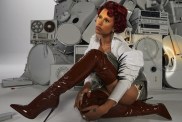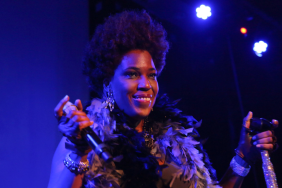Intro By P Dizzle
It was four years ago when I saw her. In a confined space of colour and chaos against a grim backdrop of the world square construction site, she was the one that caught my attention.
Her gaze entranced me. Who was this girl? where did she come from? and why was the graf artist, like myself so intruiged by her enigmatic stare?
Four years on and her face still haunted me flipping through magzines and websites she taunted me ‘find me’, who was she? was she the artists’ lover? a sister or a mother? or a nondescript person of no meaning to the artist? or was she dead? reborn through the stencil and paint into an artwork that was to last a lifetime in books and magazines?
These questions popped up everytime I saw her
‘find Me’.
And then. I did.
She wasn’t dead. Her name was Suzanne and she was living down in Melbourne. She wrote an article about the surprise she felt seeing her own face plastered on walls through-out the city. And he was a Graf artist (RONE) of high regard who had felt something in her stare. And I was the one who was looking for these two for a very long time…

ONE ordinary day, I saw my ghost in a dark tunnel. It was an autumn afternoon, three years ago. I was a passenger in my sister’s car travelling down Punt Road. As we entered the Richmond tunnel the traffic lights changed, we stopped and waited, and then my sister exclaimed, “Look! That’s you, Suzanne!”
I turned towards the tunnel wall and saw an image of a young girl’s face printed on an enormous poster. At first glance it meant nothing but the second time I saw myself when I was a twenty-something. The traffic lights changed and we were on our way. I looked back, I looked at my sister, and then I squealed with disbelief. We laughed all the way home. The hilarity continued as I sifted through a box of old modelling photos, taken in the early ’70s, until I found the right one. I was indeed the young girl on the poster under the Richmond Bridge.
The next day I stood under the bridge and studied the three-metre poster. It was the work of a graffiti artist who had enhanced the original photo by white-washing the face, accentuating the dark eyes and hair. There was another additional touch that gave the impression that the girl was sad; black tears streamed down the colourless face. The vision reflected another time in my life and yet it also illustrated what I was feeling at that moment. And I wondered, was it possible that this artist knew that lately I had been crying a lot? My 30-year marriage was beginning to fall apart.
Soon more posters of the same image were seen in city lanes and on bridges by the Yarra. I was mystified. But my sister, who wanted me to be happy, said, “It’s a sign! A new beginning.”
Not knowing who the artist was and why my photo was chosen meant that my friends and I could play detective. Our imaginations went wild as we thought of elaborate plots, usually with romantic themes. One friend suggested that someone from my past wanted to contact me. He’d forgotten my name and arranged for my photo (the only one he had) to be displayed in busy city locations where I was sure to see it! Although I was encouraged to find the artist I was content to have fun with the mystery. Perhaps the real story would not be as exciting.
Eventually, the poster story was only told on rare occasions. But this year I received surprising news from New York. My son rang to tell me he had been given a gift, a book titled, Stencil Graffiti Capital: Melbourne. It was bought from an art gallery two blocks from his loft in Brooklyn and it contained photos of my poster and the creator. I bought the book, which documented the work of several stencil graffiti artists in Melbourne, giving me the clues I needed to find the person who’d plastered me all over town.
His tag name is Rone and after exchanging emails I finally met him last April at a graffiti art exhibition in Richmond, where he welcomed me. He is a talented graphic artist and his interest in fashion photography inspired him to create a series of large-scale women’s faces; my image was the first in the series. I discovered that Rone surrenders his art to the weather and is fascinated by the ageing process.
He found my photo in a fashion magazine from 2003, which referred to ’70s fashion. He was originally attracted to my expression in the photo, which he described as “sad or maybe angry; it’s somewhere in between”. When I first saw the poster I was drifting between those two emotions; these feelings were to linger for some time after.
The seasons brushed over my image and whenever I passed through that tunnel I noticed the poster slowly deteriorate and when only a one small piece remained, defying the elements, a year had passed and my marriage was over.
BY Suzanne Brenchley. This article originally appeared in The Age












